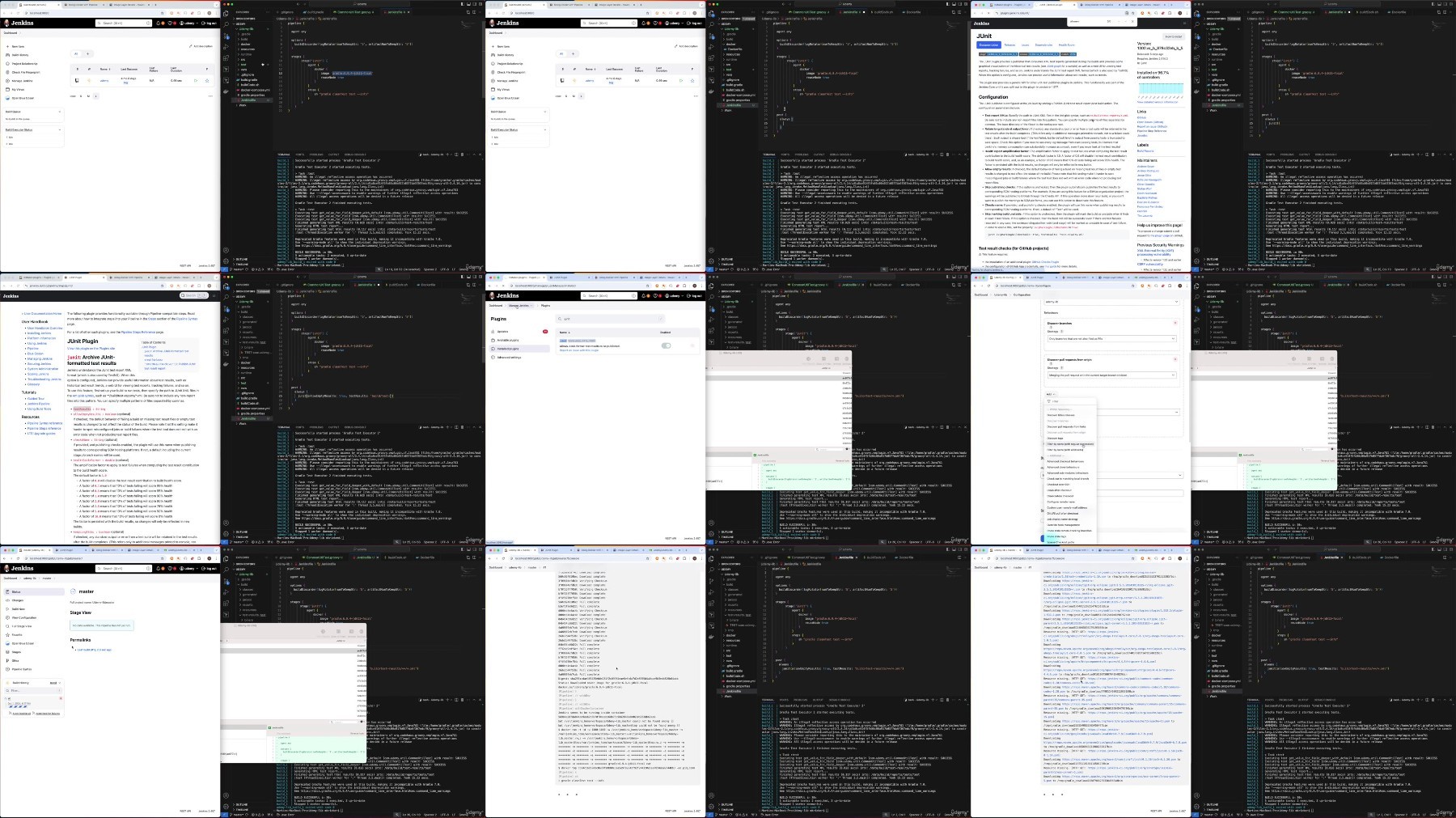Most Commented
Getting Started With Jenkins Pipelines




Description material

Getting Started With Jenkins Pipelines
Published 10/2024
MP4 | Video: h264, 1920x1080 | Audio: AAC, 44.1 KHz
Language: English | Size: 1.01 GB | Duration: 3h 12m
Learning on how to use jenkins pipelines and create shared libraries
What you'll learn
Understand pipeline syntax
Have a grasp on basic elements
Create new pipelines from scratch
Avoid common pitfalls
Requirements
Docker compose installed
Description
JenkinsJenkins is a commonly used building server used to automate different types of pipelines. A pipeline is this context is a step by step process which runs different types of automations from start to finish. Within the IT space, this also referred too as a build or deploy pipeline. Within the course we will focus on these automations and how they can help you.CourseTo get the most out of Jenkins, you will need to know how to use it correctly. We will go over every stage step by step and start with the basic all the way up to re-using components that we made into the same pipelines we started with. Over the span of this course you will learn the Jenkins syntax but also know how to use and maintain a Jenkins server within your organisation. As you will grow your skill not just in Jenkins itself, but also in how to make pipelines more effective using the power of groovy coding.The combination of these techniques will help you grow your Jenkins skill, not just in making pipelines but also in start or continue your programming knowledge. After you completed this course, you will be ready to start your own projects and have a good base from where to start.
Overview
Section 1: Introduction
Lecture 1 Introduction
Section 2: Type of pipeline
Lecture 2 Declarative vs Scripted
Section 3: Setting up an environment
Lecture 3 Overview of the setup
Lecture 4 Install Gitea
Lecture 5 Install Jenkins
Lecture 6 Store Gitea token into jenkins
Lecture 7 Add Gitea server to Jenkins
Lecture 8 Set Jenkins webhook for Gitea
Section 4: Setting up the pipeline
Lecture 9 Create repo for pipeline
Lecture 10 Create folder for pipeline
Section 5: Basic concepts
Lecture 11 Blue Ocean
Lecture 12 Replay
Section 6: Options en Environment
Lecture 13 Options
Lecture 14 Environment variables and secrets
Lecture 15 Parameters
Lecture 16 Triggers
Lecture 17 Tools
Section 7: Agents
Lecture 18 Agent labels
Lecture 19 Running dockers as agents
Section 8: Basic steps
Lecture 20 echo
Lecture 21 sh
Lecture 22 withEnv
Lecture 23 sleep
Lecture 24 timeout with input
Lecture 25 parallel stages
Section 9: Conditions and Post steps
Lecture 26 Basic conditions
Lecture 27 Complex conditions
Lecture 28 Setting up different post actions
Section 10: Stashes and code blocks
Lecture 29 Using script blocks
Lecture 30 Stashes
Section 11: Workspace
Lecture 31 Workspace in the UI
Lecture 32 fileExists
Lecture 33 dir
Lecture 34 readFile
Lecture 35 writeFile
Section 12: Pipeline Utility steps
Lecture 36 Plugins
Lecture 37 readJson
Lecture 38 readYaml
Lecture 39 writeJson
Lecture 40 writeYaml
Section 13: Shared Libraries
Lecture 41 Setting up a coding environment
Lecture 42 Echo hello world
Lecture 43 Load the shared library
Lecture 44 Working in source
Section 14: Improve Shared Library
Lecture 45 Parent class
Lecture 46 Create stage from code
Lecture 47 Working with maps
Lecture 48 Working with docker
Lecture 49 Load file from library into the workspace
Lecture 50 Adding gradle to our shared library
Lecture 51 Unit test
Lecture 52 Making a pipeline for the shared library
Section 15: Conclusion
Lecture 53 Thank you
Devops beginner with Jenkins,Software engineer looking into building pipelines

RapidGator
Warning! You are not allowed to view this text.
FileAxa
Warning! You are not allowed to view this text.
FileStore
TurboBit
Warning! You are not allowed to view this text.
Join to our telegram Group
Information
Users of Guests are not allowed to comment this publication.
Users of Guests are not allowed to comment this publication.
Choose Site Language
Recommended news
Commented



![eM Client Pro 9.2.1735 Multilingual [Updated]](https://pikky.net/medium/wXgc.png)






![Movavi Video Editor 24.0.2.0 Multilingual [ Updated]](https://pikky.net/medium/qhrc.png)

